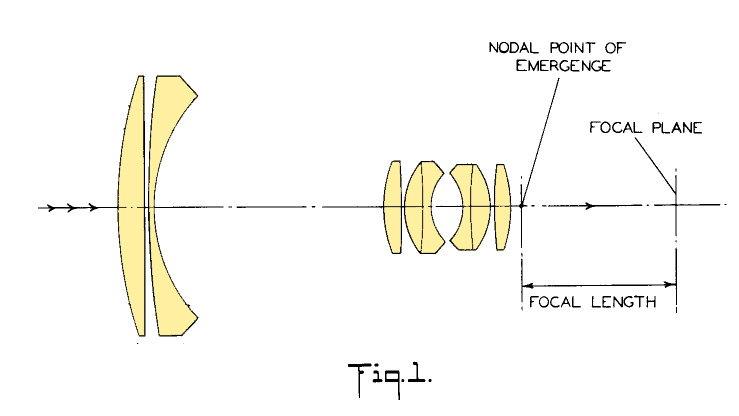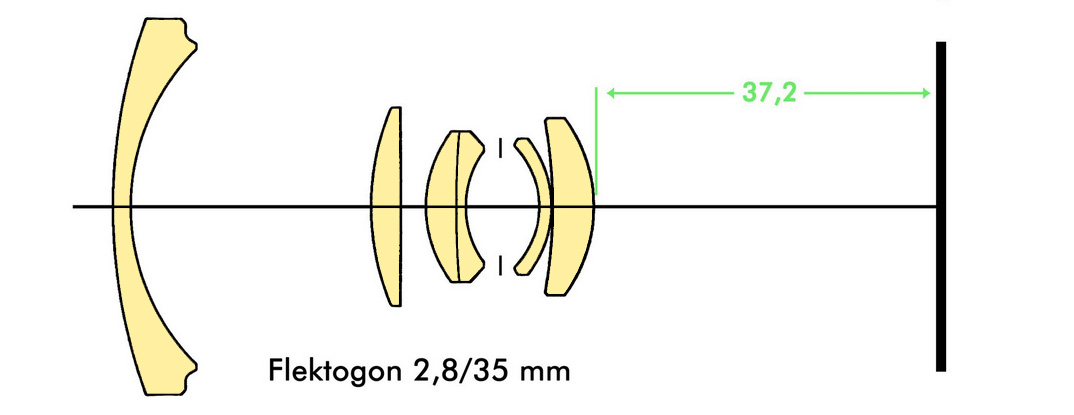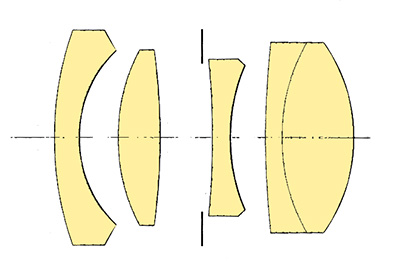| View previous topic :: View next topic |
| Author |
Message |
stevemark

Joined: 29 Apr 2011
Posts: 4085
Location: Switzerland
|
 Posted: Tue Nov 12, 2024 4:59 pm Post subject: 50 years CZJ Flektogon 2.8/35mm: Detailed history revealed Posted: Tue Nov 12, 2024 4:59 pm Post subject: 50 years CZJ Flektogon 2.8/35mm: Detailed history revealed |
 |
|
stevemark wrote:
Marco Kröger has published an excellent article about the history of the Carl Zeiss Flektogon 2.8/35mm at his "zeissikonveb.de" website:
https://zeissikonveb.de/start/objektive/wechselobjektive1950er/carl-zeiss-jena/flektogon-2-8-35.html
While the original article (and the many historical documents presented within) is in German, google translate results in a pretty accurate translation:
https://zeissikonveb-de.translate.goog/start/objektive/wechselobjektive1950er/carl-zeiss-jena/flektogon-2-8-35.html?_x_tr_sl=de&_x_tr_tl=en
Highly recommended!
S
_________________
www.artaphot.ch |
|
| Back to top |
|
 |
visualopsins


Joined: 05 Mar 2009
Posts: 11061
Location: California
Expire: 2025-04-11
|
 Posted: Tue Nov 12, 2024 7:25 pm Post subject: Posted: Tue Nov 12, 2024 7:25 pm Post subject: |
 |
|
visualopsins wrote:
  
_________________
☮☮☮☮☮☮☮☮☮☮☮☮☮☮☮☮☮☮☮☮☮☮☮☮☮☮☮☮☮☮☮☮ like attracts like! ☮☮☮☮☮☮☮☮☮☮☮☮☮☮☮☮☮☮☮☮☮☮☮☮☮☮☮☮☮☮☮☮
Cameras: Sony ILCE-7RM2, Spotmatics II, F, and ESII, Nikon P4
Lenses:
M42 Asahi Optical Co., Takumar 1:4 f=35mm, 1:2 f=58mm (Sonnar), 1:2.4 f=58mm (Heliar), 1:2.2 f=55mm (Gaussian), 1:2.8 f=105mm (Model I), 1:2.8/105 (Model II), 1:5.6/200, Tele-Takumar 1:5.6/200, 1:6.3/300, Macro-Takumar 1:4/50, Auto-Takumar 1:2.3 f=35, 1:1.8 f=55mm, 1:2.2 f=55mm, Super-TAKUMAR 1:3.5/28 (fat), 1:2/35 (Fat), 1:1.4/50 (8-element), Super-Multi-Coated Fisheye-TAKUMAR 1:4/17, Super-Multi-Coated TAKUMAR 1:4.5/20, 1:3.5/24, 1:3.5/28, 1:2/35, 1:3.5/35, 1:1.8/85, 1:1.9/85 1:2.8/105, 1:3.5/135, 1:2.5/135 (II), 1:4/150, 1:4/200, 1:4/300, 1:4.5/500, Super-Multi-Coated Macro-TAKUMAR 1:4/50, 1:4/100, Super-Multi-Coated Bellows-TAKUMAR 1:4/100, SMC TAKUMAR 1:1.4/50, 1:1.8/55
M42 Carl Zeiss Jena Flektogon 2.4/35
Contax Carl Zeiss Vario-Sonnar T* 28-70mm F3.5-4.5
Pentax K-mount SMC PENTAX-A ZOOM 1:3.5 35~105mm, SMC PENTAX ZOOM 1:4 45~125mm
Nikon Micro-NIKKOR-P-C Auto 1:3.5 f=55mm, NIKKOR-P Auto 105mm f/2.5 Pre-AI (Sonnar), Micro-NIKKOR 105mm 1:4 AI, NIKKOR AI-S 35-135mm f/3,5-4,5
Tamron SP 17mm f/3.5 (51B), Tamron SP 17mm f/3.5 (151B), SP 500mm f/8 (55BB), SP 70-210mm f/3.5 (19AH)
Vivitar 100mm 1:2.8 MC 1:1 Macro Telephoto (Kiron)
|
|
| Back to top |
|
 |
visualopsins


Joined: 05 Mar 2009
Posts: 11061
Location: California
Expire: 2025-04-11
|
 Posted: Tue Nov 12, 2024 7:54 pm Post subject: Posted: Tue Nov 12, 2024 7:54 pm Post subject: |
 |
|
visualopsins wrote:
Revelation: Zeiss designed the FIRST retrofocus wide angle lens, not Angénieux!
_________________
☮☮☮☮☮☮☮☮☮☮☮☮☮☮☮☮☮☮☮☮☮☮☮☮☮☮☮☮☮☮☮☮ like attracts like! ☮☮☮☮☮☮☮☮☮☮☮☮☮☮☮☮☮☮☮☮☮☮☮☮☮☮☮☮☮☮☮☮
Cameras: Sony ILCE-7RM2, Spotmatics II, F, and ESII, Nikon P4
Lenses:
M42 Asahi Optical Co., Takumar 1:4 f=35mm, 1:2 f=58mm (Sonnar), 1:2.4 f=58mm (Heliar), 1:2.2 f=55mm (Gaussian), 1:2.8 f=105mm (Model I), 1:2.8/105 (Model II), 1:5.6/200, Tele-Takumar 1:5.6/200, 1:6.3/300, Macro-Takumar 1:4/50, Auto-Takumar 1:2.3 f=35, 1:1.8 f=55mm, 1:2.2 f=55mm, Super-TAKUMAR 1:3.5/28 (fat), 1:2/35 (Fat), 1:1.4/50 (8-element), Super-Multi-Coated Fisheye-TAKUMAR 1:4/17, Super-Multi-Coated TAKUMAR 1:4.5/20, 1:3.5/24, 1:3.5/28, 1:2/35, 1:3.5/35, 1:1.8/85, 1:1.9/85 1:2.8/105, 1:3.5/135, 1:2.5/135 (II), 1:4/150, 1:4/200, 1:4/300, 1:4.5/500, Super-Multi-Coated Macro-TAKUMAR 1:4/50, 1:4/100, Super-Multi-Coated Bellows-TAKUMAR 1:4/100, SMC TAKUMAR 1:1.4/50, 1:1.8/55
M42 Carl Zeiss Jena Flektogon 2.4/35
Contax Carl Zeiss Vario-Sonnar T* 28-70mm F3.5-4.5
Pentax K-mount SMC PENTAX-A ZOOM 1:3.5 35~105mm, SMC PENTAX ZOOM 1:4 45~125mm
Nikon Micro-NIKKOR-P-C Auto 1:3.5 f=55mm, NIKKOR-P Auto 105mm f/2.5 Pre-AI (Sonnar), Micro-NIKKOR 105mm 1:4 AI, NIKKOR AI-S 35-135mm f/3,5-4,5
Tamron SP 17mm f/3.5 (51B), Tamron SP 17mm f/3.5 (151B), SP 500mm f/8 (55BB), SP 70-210mm f/3.5 (19AH)
Vivitar 100mm 1:2.8 MC 1:1 Macro Telephoto (Kiron)
|
|
| Back to top |
|
 |
stevemark

Joined: 29 Apr 2011
Posts: 4085
Location: Switzerland
|
 Posted: Tue Nov 12, 2024 9:47 pm Post subject: Posted: Tue Nov 12, 2024 9:47 pm Post subject: |
 |
|
stevemark wrote:
| visualopsins wrote: |
| Revelation: Zeiss designed the FIRST retrofocus wide angle lens, not Angénieux! |
Not really - the Brits (William Horace Lee) and the Americans (Mellor) were faster  . Around 1930 several retrofocus type lenses were patented, but they were for 18x24mm ciné-film, and they were normal lenses (not wideangles). Here's the Lee design, patented in 1930: . Around 1930 several retrofocus type lenses were patented, but they were for 18x24mm ciné-film, and they were normal lenses (not wideangles). Here's the Lee design, patented in 1930:

You can easily recognize the double Gauss master lens (right) and the achromatic dispersive part used to enlarge the distance between last lens and the focal plane. As may have noticed, the Flektogon is in principle a simplified version of the Lee lens above:

Zeiss Jena (Rudolf Solisch, to be precise) did use low dispersive LD glass (v=70) for the negative front lens and therefore didn't need the achromatic doublet used by Lee; a single lens now was sufficient. In addition he simplified the Double Gauss master lens used by Lee to get the Xenotar structure.
The probably first wideangle retrofocus - also for ciné applications - came from Rudolf Kingslake (Eastman Kodak, US) in 1941, with a 60° angle:

In his 1941 patent, Kingslake writes in the introduction: "The use of negative supplementary lenses in front of ... positive lens systems of various types for increasing the working distance, i. e. back focus of the system, is widely known". He continues to outline the negatve consequences of the large distance between master lens and negative supplementary lenses found in hiterto known "inversed telephoto" (=retrofocus) lenses. His patented lens shown above was far ahead of its time; such compact "integrated" constructions didn't get traction among the well known SLR lens makers until at least 30 years later. The Minolta MD 2.8/35mm (1975) was an early such lens:

The Zeiss Flektogon may have been the first retrofocus wideangle for 35mm cameras, though.
S
_________________
www.artaphot.ch |
|
| Back to top |
|
 |
|
|
|
You cannot post new topics in this forum
You cannot reply to topics in this forum
You cannot edit your posts in this forum
You cannot delete your posts in this forum
You cannot vote in polls in this forum
|
